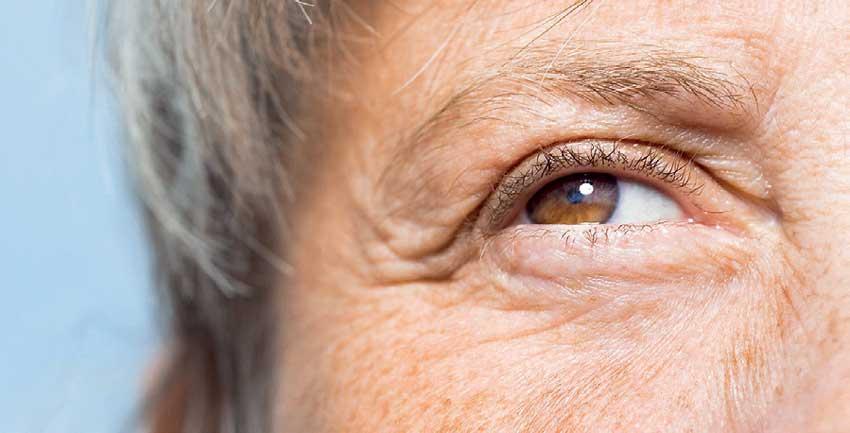Reply To:
Name - Reply Comment

 The skin has been accounted to reflect the general inner-health status and ageing of a person. A young and a beautiful appearance may have a positive influence on our social behaviour as well as for the reproductive status. The connection between nutrition and skin ageing has become a common field of interest for humans at present. If our skin is getting older than our real age, it affects our overall health and quality of life, functional capacity, social participation and independence.
The skin has been accounted to reflect the general inner-health status and ageing of a person. A young and a beautiful appearance may have a positive influence on our social behaviour as well as for the reproductive status. The connection between nutrition and skin ageing has become a common field of interest for humans at present. If our skin is getting older than our real age, it affects our overall health and quality of life, functional capacity, social participation and independence.
Importance of skin
The skin is a barrier that separates the human body from the environment. There are several functions of the skin. The skin acts as a physical barrier against friction and shearing forces which come from external environment. It helps to protect against infection, chemicals and ultraviolet (UV) irradiation. The skin prevents excessive water loss from the body. Vitamin D, which is one of the major vitamin needs for bone health, is synthesised in the skin with the help of UV radiation. The skin helps to keep your body temperature even. Your skin is full of nerve endings, helping to sense pain, touch and temperature.
Skin ageing
Intrinsic and Extrinsic factors influence skin ageing. The ageing of the skin in the same pattern where all internal organs get old, is called ‘Intrinsic Ageing’. It is a physiological change. Skinng ageing due to external environmental factors such as air pollution, smoking, poor nutrition and sun exposure, is called ‘Extrinsic Ageing’. This external ageing also known as ‘premature skin ageing’.
In both intrinsic and extrinsic ageing, reactive oxygen species (ROS) play a critical role in structural alterations in the skin. DNA damage and other changes (ex – DNA mutation) may occur when the skin is persistently exposed to UV radiation and ultimately it can lead to premature skin aging or carcinogenesis.
Skin ageing and changes to the skin
Thinning, dry skin, pale, fine wrinkles, gradual decrease in skin size (dermal atrophy), dullness, lack of elasticity are the main skin changes in intrinsic skin ageing. Coarse wrinkles, loss of elasticity, laxity and rough textured appearance can be seen in extrinsic skin ageing.
Factors influencing premature skin ageing
There are several causative factors for premature skin ageing. UV radiation is the commonest cause. Chronic, low-grade inflammation, low oestrogen levels in menopause, underweight (Body Mass Index <18kg/m²), chronic clinical conditions such as Chronic Obstructive Pulmonary Disease (COPD), Chronic renal insufficiency, emotional stress, acne scarring and sleep deprivation, higher dietary intake of fats and carbohydrates, tobacco smoking and alcohol consumption and not drinking adequate water are the other factors influencing premature skin ageing.
There’s a process called ‘glycation’. This creates bonding between sugar (glucose and fructose) and amino acids present in collagen and elastin in the skin. This sugar -amino acid bond forms a complex known as Advanced Glycation End products (AGE). Collagen and elastin are normally linked in a pattern that allows them to be repaired. But glycation adds cross-links that interfere with the repair mechanism.
Nutritional treatments
Nutritional as well as Non – Nutritional treatments can be used to manage premature/ extrinsic skin ageing. Antioxidants such as vitamin A, C and E, or antioxidative enzymes, such as superoxide dismutase, catalase, glutathione peroxidase, tocophenols, flavonoids, Vitamin D and coenzyme Q10 play a major role in preventing Premature skin ageing.
Caloric restriction without enhancing malnutrition can also delay the onset of ageing. Vitamin D helps to protect the skin against UV-B-induced cellular damage (Reichrath, 2012)25-dihydroxyvitamin D [1,25(OH. Quit tobacco smoking and alcohol consumption, and drinking more water (more than two liters per day) help to manage premature skin ageing.
Foods with antioxidant activity
Vitamin C rich foods include fruits such as Nelli, Guava, Cashew fruit, star fruit (kamaranka) and citrus fruits (orange, lemon), papaya, pineapple, veralu (Sri Lankan olives) and dark green leafy vegetables like drumstick leaves, kathurumurunga, gotukola, kankun, radish leaves, beetroot leaves, drumstick, capsicum, bitter gourd and tomato.
Vitamin A rich foods come from animal sources like egg, whole milk, cheese, butter, liver, kidney and fish oil. It is also present in dark green leafy vegetables and other vegetables like carrot, yellow sweet potato, tomato and yellow pumpkin. Fruits like mango, papaya, lavulu, orange carry this vitamin.
Vitamin E rich foods are- Spinach, sweet potato, tomato, avocado, papaya, bell pepper, nuts & seeds, wholegrain products and oil like olive and corn.
Selenium rich foods are- Cereals (rice, barley, wheat, corn), nuts, soybeans, animal products (beef, chicken, egg) and sea food (tuna and shell fish)
Spices like cloves, cinnamon, Flavonoids containing foods such as Berries, cherries, red grapes, tea, citrus fruits, Vitamin D sources such as Sunlight, fish and fortified foods such as yogurts or cereals are recommended.
According to Sri Lankan Food Based Dietary Guidelines, at least five varieties of fruits and vegetables should be consumed per day. An adult needs a minimum of 400g of fruits and vegetables per day.
If we are planning our meals according to those recommendations, we need not pay any additional attention to keep the skin healthy.
(The writer is a Post Graduate Trainee, MSc in Human Nutrition)